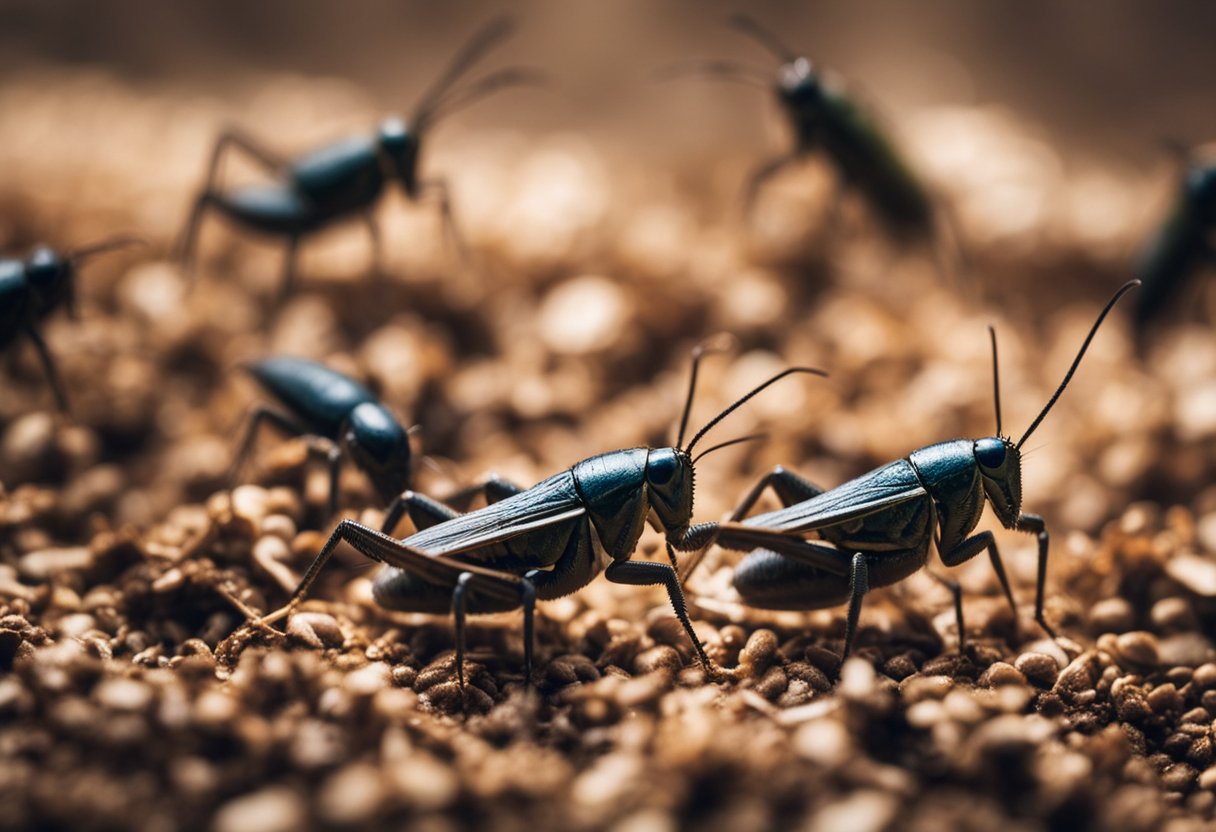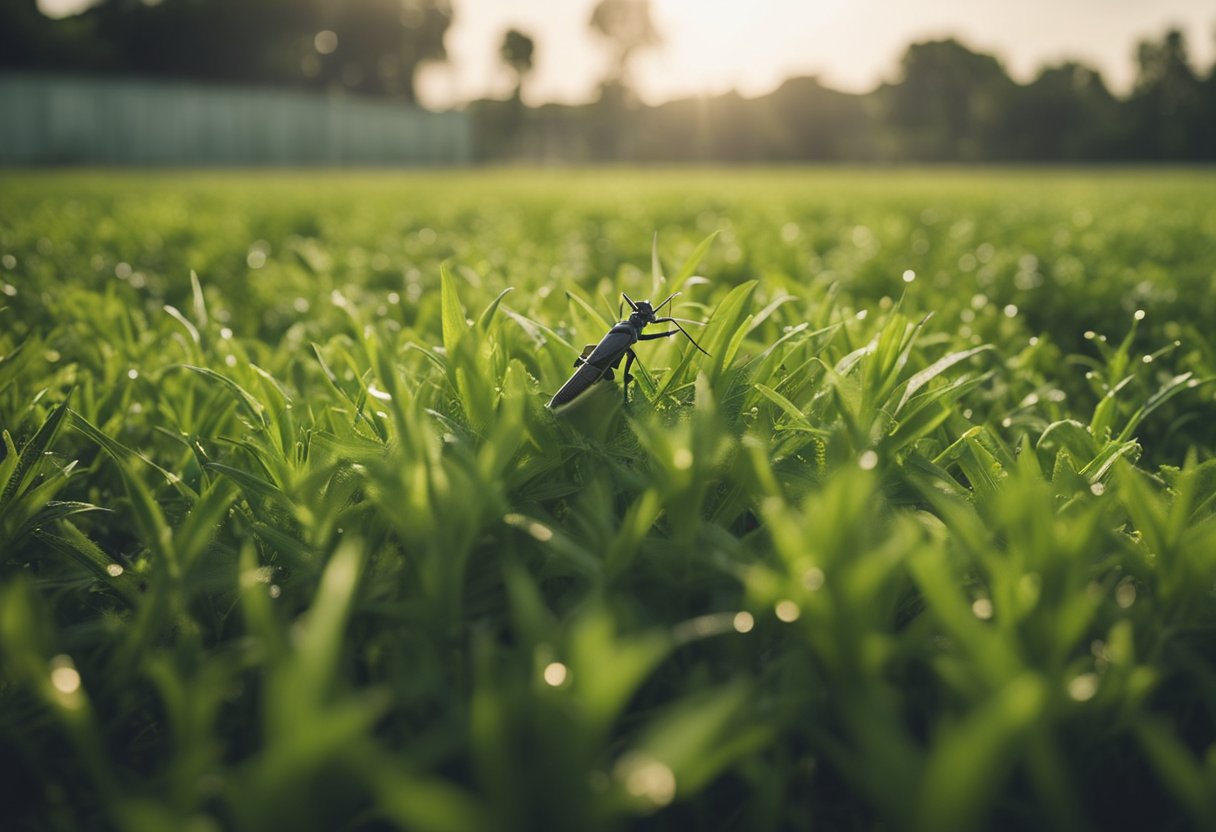Cricket infestations can wreak havoc on homes, gardens, and agricultural lands, causing significant disturbance with their incessant nocturnal chirping and potential damage to plants and fabrics. Managing cricket populations effectively often hinges on understanding the differences and applications of natural versus chemical repellents.
Natural repellents appeal to those seeking environmentally friendly solutions, and these often harness substances like molasses, neem oil, or diatomaceous earth to deter or trap crickets. On the other hand, chemical repellents offer a potent alternative, with insecticides containing active ingredients like bifenthrin or permethrin designed to target and eliminate crickets swiftly.

Selecting the correct repellent requires weighing factors such as safety, effectiveness, longevity of the solution, and impact on non-target species and the broader environment. Natural repellents are typically safer for use around children and pets, and they can be part of an integrated pest management approach that emphasizes sustainability. Chemical repellents might be chosen for their fast action and thoroughness, but users must handle them with caution, following precise application instructions to mitigate any adverse environmental or health effects.
Understanding the lifecycle and habits of crickets is crucial for implementing any control measures. Homeowners and gardeners must identify areas of cricket activity to apply repellents effectively. While natural solutions may require patience and persistence, chemical approaches demand responsible usage to prevent potential resistance in cricket populations and minimize ecological disruption. Whether one opts for natural or chemical agents, a well-informed strategy is vital for achieving long-term relief from cricket invasions.
Understanding Crickets and Their Behavior
Crickets are orthopteran insects, which come under the family Gryllidae. They are known for their chirping sound, produced by males vigorously rubbing their wings together to attract females. They exhibit a range of behaviors that are intrinsic to their survival and reproduction.
Types of Crickets: Common cricket species include the house cricket (Acheta domesticus), field cricket (Gryllus pennsylvanicus), camel cricket (Rhaphidophoridae), and mole cricket (Gryllotalpidae). Each species has adapted to thrive in specific environments. House crickets tend to reside indoors and near human dwellings, while field crickets are more commonly found outdoors in gardens and fields. Camel crickets are distinguished by their humpbacked appearance and are often found in moist, dark environments such as basements or caves. Mole crickets are burrowers that can cause damage to lawns and turf.
Habitats and Behavior: Crickets are most active at night and are attracted to warm environments. Field and house crickets prefer dry conditions, whereas camel and mole crickets seek out moist habitats. A cricket infestation may occur when these insects enter buildings in search of food, moisture, or shelter.
- Life Cycle: The cricket life cycle begins with the laying of eggs in the soil or on plants. Upon hatching, nymphs emerge, resembling smaller adults. These nymphs go through several molts before reaching maturity.
- Attractants and Deterrents: Crickets are drawn to areas where they can find food, such as plants, fungi, and organic debris. They are also attuned to areas that provide adequate shelter.
Identifying a cricket infestation involves recognizing the signs, such as the presence of crickets, their distinctive chirping, and potential damage to fabric or plants. Understanding the behavior and preferences of crickets is crucial when choosing the appropriate method to manage an infestation, be it natural or chemical repellents.
Natural Cricket Repellent Solutions

Natural solutions for cricket control are varied and can be highly effective when applied correctly. They often involve the use of essential oils, natural predators, and environmental adjustments that contribute to deterring crickets from entering an area.
Using Essential Oils and Herbs
Essential oils and herbs are a popular choice for natural cricket repellents due to their accessibility and ease of use. For example:
- Peppermint Oil: A strong scent that crickets tend to avoid.
- Lavender: Can be used in oil form or as planted herbs to deter crickets.
- Neem Oil: Known for its insect repelling properties, neem oil can act as a barrier.
- Citrus Oils: Crickets are averse to the smell, making citrus oils an effective deterrent.
Planting garlic and nitrogen-fixing plants around a property can also create an unfriendly environment for crickets due to strong smells and soil conditions they don’t prefer.
DIY Repellents and Natural Predators
Cricket populations can be managed through do-it-yourself remedies and encouraging the presence of natural predators:
- Molasses Bait: A mixture of molasses and water creates a sticky trap.
- Soapy Water: Spraying areas with a soap solution can repel crickets.
- Diatomaceous Earth: A natural substance that causes dehydration in crickets upon contact.
Encouraging natural predators like lizards and spiders can significantly control cricket numbers. This method works by integrating the food chain into pest management, where these predators naturally seek out and consume crickets.
Environmental Adjustments for Prevention
To minimize cricket infestations:
- Remove Debris: Clearing yard waste can eliminate cricket hiding spots.
- Seal Entry Points: Ensure that crickets cannot enter by sealing cracks.
- Moisture Control: Reducing moisture around foundations deters crickets.
Additionally, the introduction of nematodes into the soil can help in controlling cricket larvae through natural predation, making the area less conducive to cricket development.
Chemical Repellents and Pest Control
Chemical repellents for cricket control often include a range of commercial products and treatments designed to deter or eliminate crickets effectively. Professional pest control services may be sought to handle severe infestations using specialized chemical solutions.
Commercial Repellents
Commercially available cricket repellents typically contain various chemicals that act as deterrents to crickets. Products may come in forms such as sprays, granules, and baits, with active ingredients that are regulated to ensure safety when used according to the manufacturer’s instructions. Borax, for example, is a common substance found in some commercial repellents due to its effectiveness in cricket control. However, users must follow application guidelines to avoid unintended harm to other wildlife or pets.
Chemical Treatments and Their Impact
Chemical treatments conducted by pest control professionals often involve more potent chemicals for significant infestations. These professionals utilize a systematic approach to cricket control, which might include insect growth regulators or broad-spectrum insecticides. One must consider the impact of harsh chemicals on the environment and non-target species. Many treatments aim for a balance between efficacy and ecological safety. Homeowners are urged to discuss these factors with a pest control professional to understand the potential repercussions of chemical treatments.
Home and Garden Maintenance for Cricket Prevention
Effective cricket prevention begins with diligent home and garden maintenance. By securing potential entry points and managing moisture and debris, homeowners can create an environment that is less appealing to crickets.
Securing Entry Points
Crickets can enter homes through small gaps and cracks. Homeowners should inspect the exterior of their properties, particularly around windows, doors, and basements, to identify any potential entry points. It is advisable to use sealants or caulks to close these gaps. Door frames and window screens should be intact and tightly fitted to prevent crickets from squeezing through.
- Checklist for Entry Points:
- Inspect doors and windows for gaps or damage.
- Repair or replace damaged screens.
- Seal cracks in foundation walls and around utility pipes.
- Install door sweeps on garage and exterior doors.
Addressing Moisture and Debris
Crickets are attracted to moist environments as they require water to thrive. Homeowners should ensure that their yard does not have standing water. Gutters and downspouts should be clear of debris to prevent water from pooling near the foundation. Additionally, maintaining a clean yard by trimming vegetation and removing clutter can reduce cricket hiding spots.
Strategies to Reduce Moisture and Debris:
- Water and Humidity:
- Regularly clean gutters to prevent water accumulation.
- Use dehumidifiers in damp areas like basements and garages.
- Garden Maintenance:
- Trim plants and shrubs away from the home’s exterior.
- Remove lawn debris and stacks of wood or leaves.
Using diatomaceous earth—a naturally occurring material that can damage the exoskeletons of crickets—can help control their presence in areas prone to these pests. Spread a barrier around the home’s foundation, but always follow the manufacturer’s instructions for safe application.
Seasonal Cricket Activity and Control Strategies

Crickets are more than a seasonal annoyance; they can cause significant property damage if left uncontrolled. Their activity peaks during the warm summer months, thriving in the heat and often invading homes in search of cooler conditions. As scavengers, crickets are attracted to homes by food and water sources, feasting on crumbs and organic matter.
In summer, the focus should be on proactive measures to deter these pests. One should remove potential cricket food sources and seal entry points in their home. Keeping areas clean and devoid of crumbs can significantly reduce the cricket population.
As temperatures cool in the fall, crickets seek shelter and may enter homes. At this point, maintaining a dry environment is key, as crickets are attracted to moisture. Homeowners should fix leaks and eliminate standing water to ward off these pests.
Natural Control Strategies:
- Remove water sources: Fix leaks and ensure there is no standing water near the home.
- Secure food sources: Store food in airtight containers and dispose of garbage regularly.
Chemical Control Strategies:
- Boric Acid: Effective in controlling cricket infestations when used as bait.
- Pyrethrin: An insecticide that can be used to address common pests, including crickets.
Environmental control is a year-round strategy, as it focuses on modifying the habitat to make it less appealing to crickets. Regular maintenance and repairs can prevent property damage by keeping crickets at bay, thus protecting the integrity of the home.
Safeguarding Your Home with Pets and Children in Mind

When tackling a cricket invasion, it’s crucial to choose repellents that are safe for both children and pets. Natural repellents often provide effective solutions without introducing toxic chemicals into your home.
Key Points:
- Safety: Opt for solutions that pose no health risks to kids or animals.
- Efficiency: Ensure the repellent does not compromise its purpose.
For Pets: Cats and dogs are curious by nature and tend to explore with their mouths.
- Non-Toxic: Choose cricket repellents that are non-toxic if ingested.
- Essential Oils: Some, like peppermint, can deter insects but must be used sparingly and with caution, as certain concentrations can be harmful to cats and dogs.
For Children:
- Accessibility: Store all repellents out of their reach, even natural ones.
- Application: Applying diatomaceous earth in areas where kids play should be done carefully to prevent inhalation.
Protecting the Home:
- Cricket Eggs & Fabrics: Regularly clean and vacuum carpets, clothing, and fabric to eliminate the eggs and discourage nesting.
- Natural Barriers: Use cedar wood blocks or sachets in closets as they offer a pleasant scent and act as a gentle deterrent.
Proper Shelter: Make the environment less inviting for crickets by:
- Moisture Control: Eliminate standing water and maintain dehumidified conditions.
- Sealing Entry Points: Crickets enter through small spaces; sealing these can prevent access.
By implementing these methods, your home remains a safe shelter, without compromising on repelling unwanted cricket guests.

